
STORY The 7 Prefectures Japanese Love to Visit
Have you ever wondered where Japanese go on holiday in Japan?
Where do they go for a weekend getaway or family vacation?
Just like everyone else, Japanese travel domestically for a change of scenery or escape from everyday life. And because Japan is so diverse, there’s always another side to the country that offers exactly that.
Here are 7 coveted places in Japan that hold a special place in the hearts of its people.
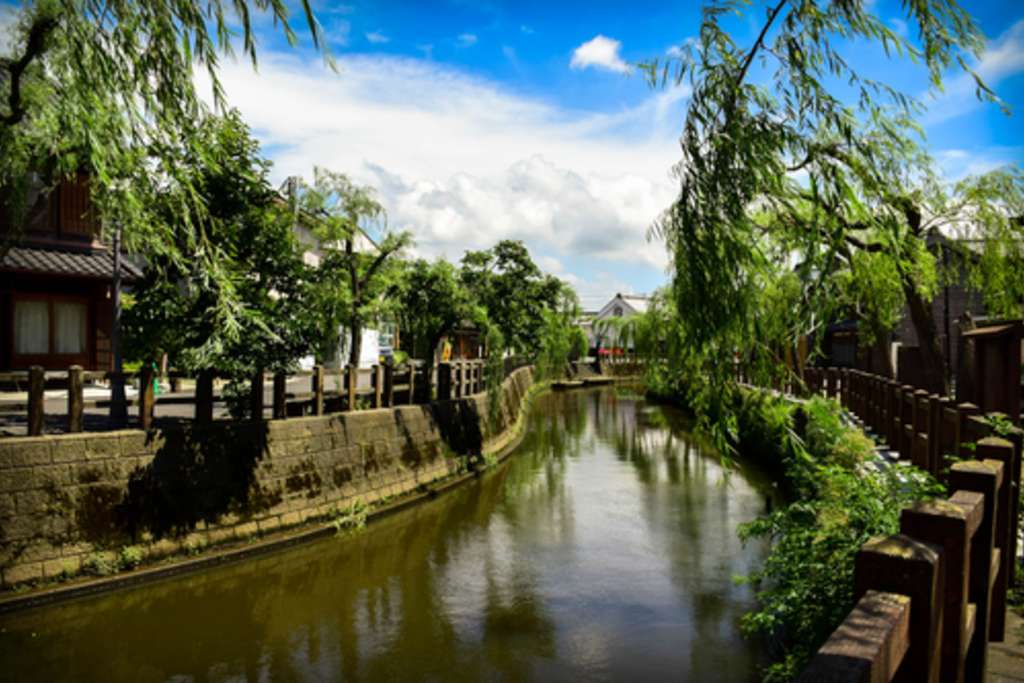
Sawara: “Little Edo”
Take a step back in time through a small Edo-period town steeped in history.
Nestled in the Kanto region prefecture of Chiba, Sawara is also affectionately known as Koedo, meaning Little Edo. Japanese people love to visit this beautifully preserved town because of its old buildings, merchants’ houses and beautiful bridges that cross the town’s winding canals, including the “waterfall bridge” that flows at certain times each day.
Just as picturesque as the historical town streets is the Suigo Sawara Aquatic Botanical Garden that boasts the largest collection of irises in Asia — over 1.5 million!
How to Get There
Sawara is easily accessible by train from Tokyo, Chiba City and Narita.
Take the JR Sobu Line to Narita Station from Tokyo Station or Chiba Station. Change to a local train and ride 30 more minutes to Sawara Station.
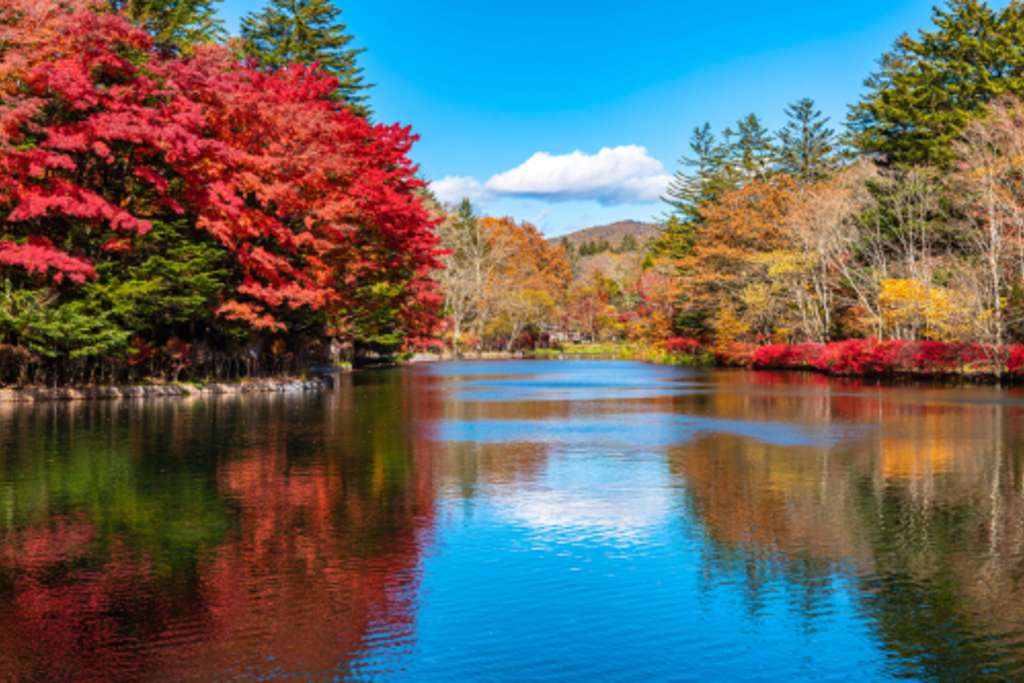
Karuizawa: A Nagano getaway
An upmarket mountain getaway an hour away from Tokyo.
Only an hour from bustling Tokyo is one of the country’s favourite getaway hotspots, for those who want to get away from the sticky summer or enjoy nearby winter activities. Sitting at the base of Mt. Asama, Karuizawa in Nagano Prefecture offers the perfect escape from the city with endless shopping opportunities along the chic streets of Kyu-Karuizawa Ginza, delicious comfort foods and stunning woodlands close by.
The cosmopolitan town’s claim to fame is that it’s the only town the world that's been a venue for both summer and winter Olympic events, and back in the day it was John Lennon and Yoko Ono's favorite place to stay!
How to Get There
Karuizawa is a straight shot from Tokyo Station on the JR Hokuriku Shinkansen (bullet train). The trip takes less than one and a half hours and is covered by the JR Pass.
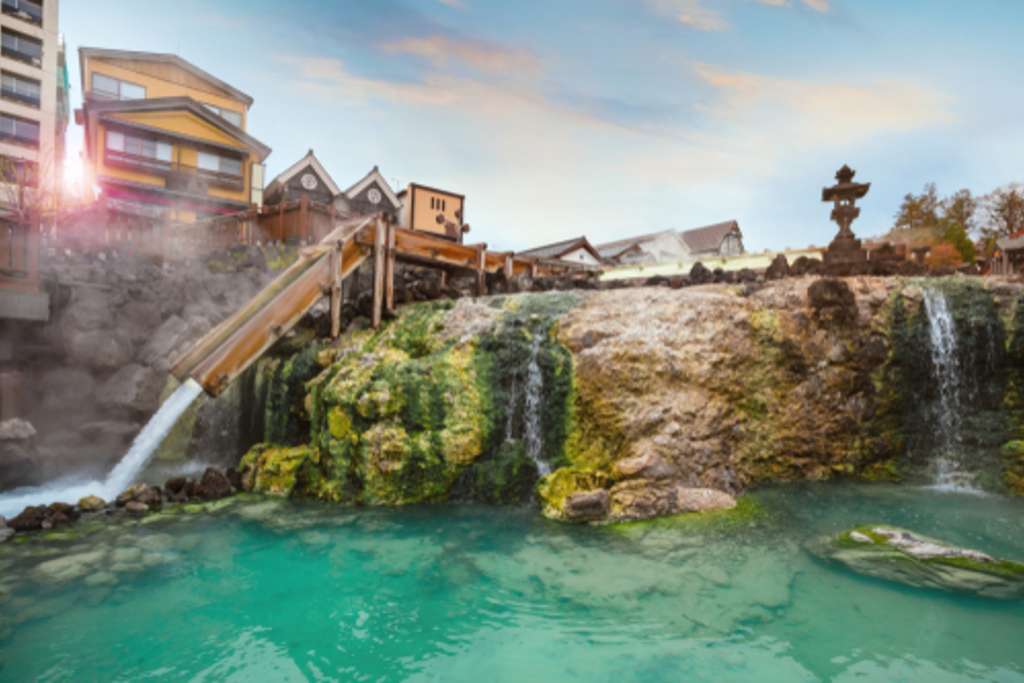
Kusatsu: The onsen of all onsen
The best onsen in the country, is often found off the beaten path.
The steamy volcanic town of Kusatsu remains one of the popular locations, with many national travel agents naming Kusatsu Onsen as the best in the country for over a decade.
Located in the highlands of western Gunma Prefecture, Kusatsu is a haven for winter sports with mountain hikes and walking trails offering adventurers much to explore. But the real draw is the hot springs.
The Yubatake—literally meaning hot water field—is where the mineral-rich waters spout from the ground. Positioned right in the middle of town, the Yubatake is the symbol of Kusatsu and is used to cool the hot water to a more enjoyable temperature.
If you’re going to soak up regional Japan, there really is no better place to do so than in Kusatsu.
How to Get There
Kusatsu Onsen is easily accessible by train and bus from Tokyo and Nagano.
Train: JR trains run from Ueno in Tokyo to Naganohara-Kusatsuguchi Station (two and a half hours). A JR bus will then take you to Kusatsu Onsen Bus Terminal in 25 minutes.
Bus: The Joshu Yumeguri-go buses run directly from Shin-Minamiguchi Terminal in front of Shinjuku Station to Kusatsu Onsen daily (three hours and 45 minutes).
Two buses run from Karuizawa (Nagano Prefecture) to Kusatsu Onsen daily. The Kusakaru bus takes just over an hour from Karuizawa to the Kusatsu Onsen Bus Terminal. The Seibu Kogen bus runs from Karuizawa to Manza Onsen and Onioshidashi before reaching the Kusatsu Onsen Bus Terminal.
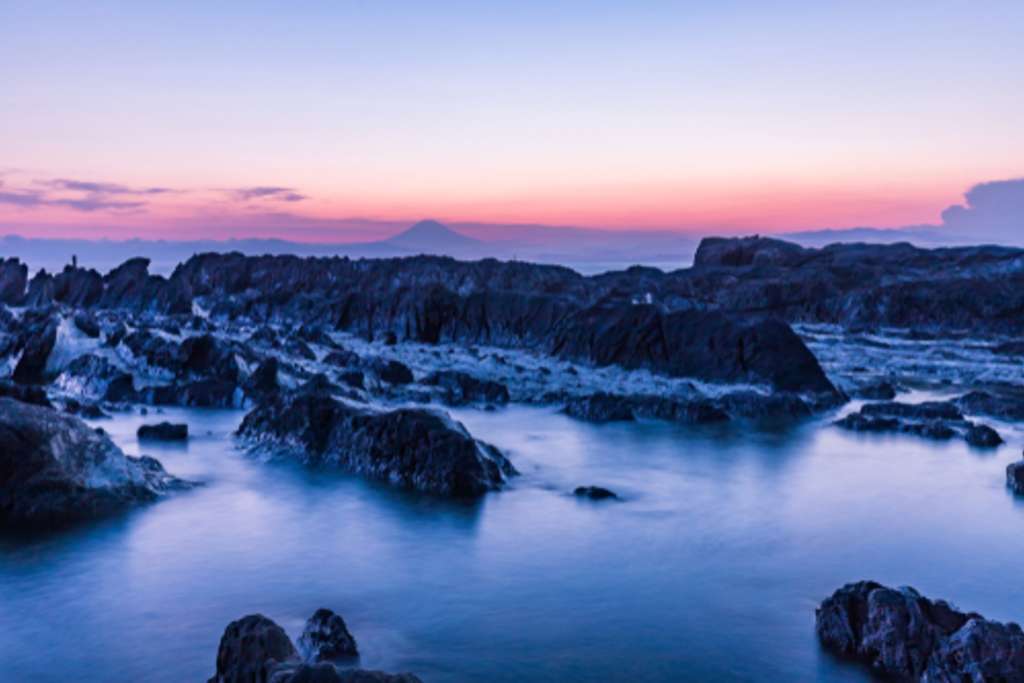
Miura: Weekend beach getaway
Only a stone’s throw from Tokyo, Miura Peninsula in Kanagawa Prefecture couldn’t be more different.
Famous for its broad beaches and rugged coastline, Miura offers laid back living.
In July and August, the beaches are full of temporary beach stalls offering food, drink, and entertainment. If you prefer a little seclusion on the sand, the further away you move from the popular Zushi Beach, the fewer crowds you’ll encounter.
The peninsula is also dotted with small fishing villages and that can only mean one thing — fish markets. If highly-prized seafood is your thing, Muira is a must.
How to Get There
From Tokyo and Yokohama, the peninsula can be accessed by train, but for further exploration, you'll need other modes of transport to get around.
There are two gateways to the peninsula. On the eastern side is Yokosuka, about 40 minutes from Yokohama on the JR or Keihin Kyuko Lines. On the western side is Zushi, served by the JR Line to Zushi Station. You can reach Zushi in 30 minutes from Yokohama.
Trains run down the middle of the peninsula to Kurihama and Misakiguchi, but bus or other transportation is required if you want to get around. It's a popular area for cyclists, and the route is the perfect distance for a day-trip.
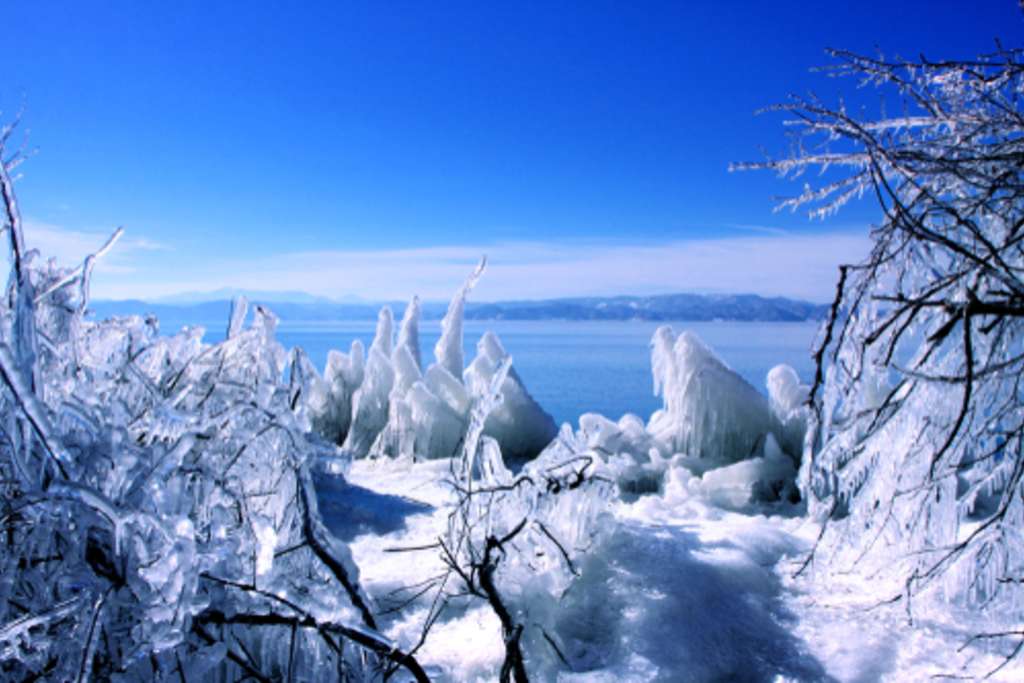
Mt. Bandai: Hikers’ heaven
Aizu Bandai (Mt. Bandai) is a dream come true for outdoor adventurers and a winter sports wonderland.
Known as the Mt. Fuji of Aizu in Fukushima Prefecture, past eruptions of this sacred peak have shaped the region's unrivalled landscapes. There are several hiking trails in the area, with paths passing abandoned hotels, hot springs and multi-coloured lakes all the way up to Mt. Bandai's peak.
Mt. Bandai is also home to over a dozen ski resorts. Located on the north and south sides of the mountain, the resorts of varying size cater to skiers and snowboarders of all levels.
How to Get There
The mountain is accessible by train and then by taxi or car.
The closest train station is Inawashiro Station. From Tokyo, take the Tohoku Shinkansen to Koriyama (80 minutes). Change for Inawashiro Station on the JR Banetsu Line (35 minutes).
By car, the Bandaisan Gold Line leads to the southwestern side of Mt. Bandai heading to Urabandai.
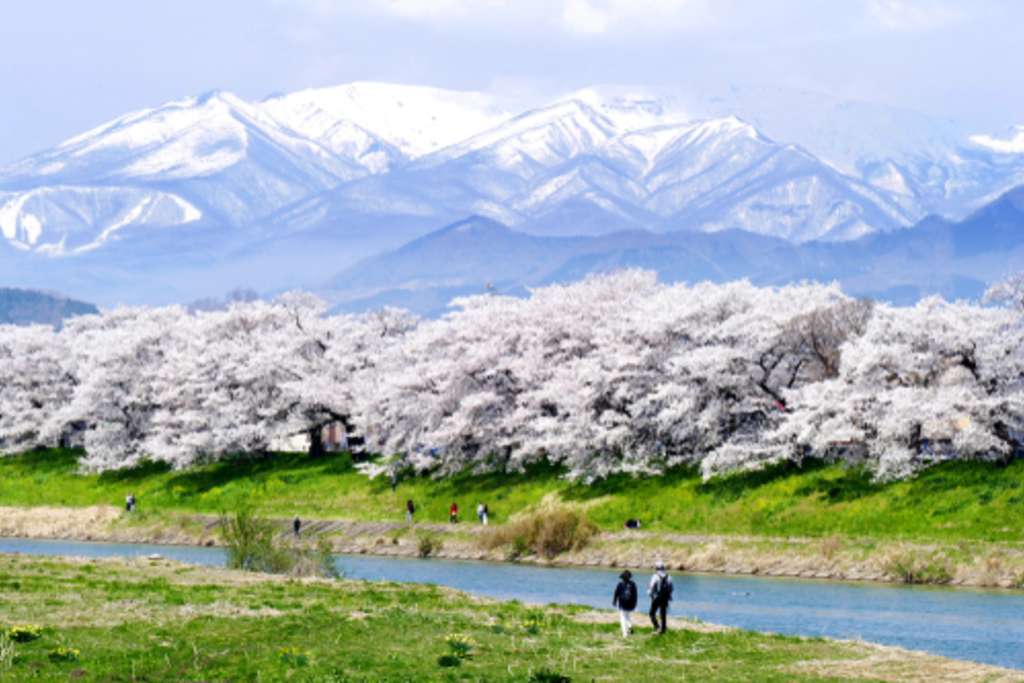
Ogawara: “1000 cherry blossoms at a glance”
During mid to late April in the town of Ogawara (Miyagi Prefecture), a stretch of Shiroishi River bursts in a glorious display of pink. One of the most famous sakura (cherry blossom) spectacles in Japan, the Hitome Senbonzakura, or “1000 Cherry Blossoms at a Glance” is a pride and joy of the Tohoku region.
Lined with around 1200 sakura trees of varying kinds, this once a year event is a pilgrimage for some, and is best enjoyed at a slow pace, perhaps with picnic.
How to get there
The line of cherry trees is between Funaoka and Ogawara stations on the Tohoku Line, a short walk from the train station.
From Tokyo, take the Tohoku Express train to Sendai station which takes one and a half hours. Then take a 30 minute train ride south using the Tohoku Line from Sendai Station.
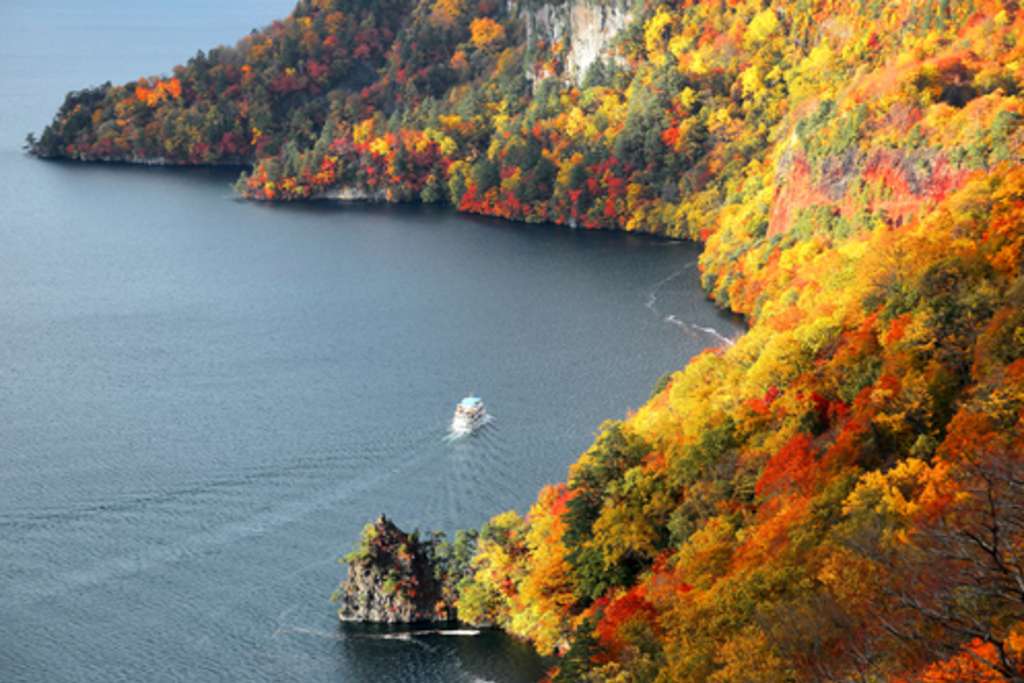
Lake Towada: A city with art at its heart
Aomori Prefectures's Lake Towada is founded on two things: A dual crater lake from a bygone eruption, and art.
The city's beauty lies in the unspoiled natural environment surrounding the lake, but it's the Towada Art Center that is responsible for its magnetic charm. Opened in 2008, the Towada Art Center is the focus of the city's initiative to revitalize itself through art.
In just over a decade, Towada has become a popular venue for contemporary art lovers (not just from Japan), featuring works by 33 world-renowned artists such as Ron Mueck and Yayoi Kusama.
How to Get There
Towada is not directly accessible by train. The primary means of transit to Towada is by car or bus. Shichinohe-Towada Station on the Tohoku Shinkansen is the most convenient place in Aomori to get a bus going to Towada. It takes about three hours and 20 minutes by Shinkansen to get to Shichinohe-Towada from Tokyo and 35 minutes to get there by bus to Towada.
There is also a bus from Tokyo direct to Towada. The bus takes a little more than 10 hours, including rest stops.



















































